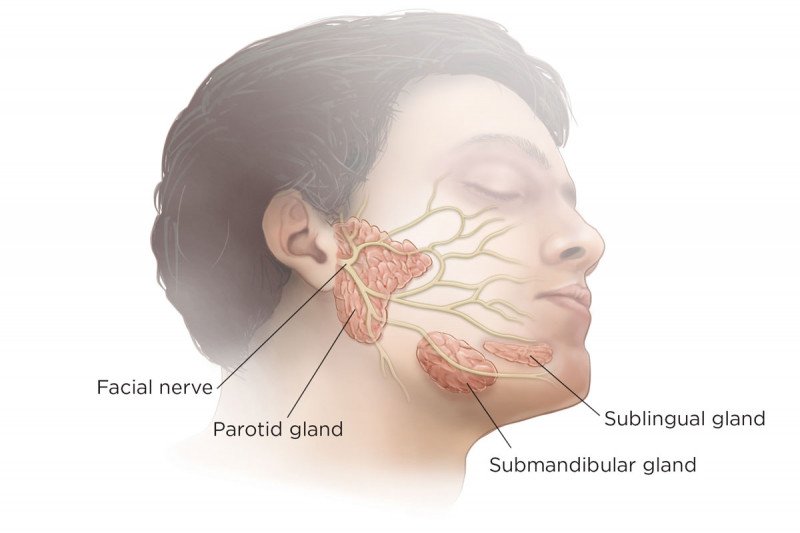
If you have been diagnosed with salivary gland cancer, knowing a little bit about the salivary glands will help you talk to your doctor about surgery or other aspects of your care.
The salivary glands make saliva and empty it into your mouth through openings called ducts. Saliva helps with swallowing and chewing. It can also help prevent infections from developing in your mouth or throat.
There are two types of salivary glands:
- the major salivary glands
- the minor salivary glands
Major Salivary Glands
The major salivary glands are the largest and most important salivary glands. They produce most of the saliva in your mouth.
There are three pairs of major salivary glands: the parotid glands, the submandibular glands, and the sublingual glands.
Parotid Glands
The parotid glands are the largest salivary glands. They are located just in front of the ears. The saliva produced in these glands is secreted into the mouth from a duct near your upper second molar.
Each parotid gland has two parts, or lobes: the superficial lobe and the deep lobe. Between the two lobes is the facial nerve. The facial nerve is important because it controls your ability to close your eyes, raise your eyebrows, and smile.
Other critical structures near the parotid glands include the external carotid artery, which is a major supplier of blood to the head and neck region, and the retromandibular vein, a branch of the jugular vein.
Surgery to treat a parotid gland tumor is called a parotidectomy. It requires great precision because the surgeon has to locate and operate around these important structures.
Learn more about parotidectomy.
Submandibular Glands
About the size of a walnut, the submandibular glands are located below the jaw. The saliva produced in these glands is secreted into the mouth from under the tongue.
Like the parotid glands, the submandibular glands have two parts called the superficial lobe and the deep lobe. Nearby structures include:
- the marginal mandibular nerve, which helps you smile
- the platysma muscle, which helps you move your lower lip
- the lingual nerve, which allows sensation in your tongue
- the hypoglossal nerve, which allows movement in the part of your tongue that helps with speech and swallowing
During treatment, we protect all of these important structures to avoid causing damage.
Learn more about submandibular gland cancer surgery.
Sublingual Glands
The sublingual glands are the smallest of the major salivary glands. These almond-shaped structures are located under the floor of the mouth and below either side of the tongue.
Tumors starting in these glands are particularly rare.
Learn more about surgery for cancers that begin in the sublingual glands.
Minor Salivary Glands
There are hundreds of minor salivary glands throughout the mouth and the aerodigestive tract. Unlike the major salivary glands, these glands are too small to be seen without a microscope. Most are found in the lining of the lips, the tongue, and the roof of the mouth, as well as inside the cheeks, nose, sinuses, and larynx (voice box).
Minor salivary gland tumors are extremely rare. However, they are more likely to be cancerous than benign. Cancers of the minor salivary glands most often begin in the roof of the mouth.
We’re available 24 hours a day, 7 days a week


